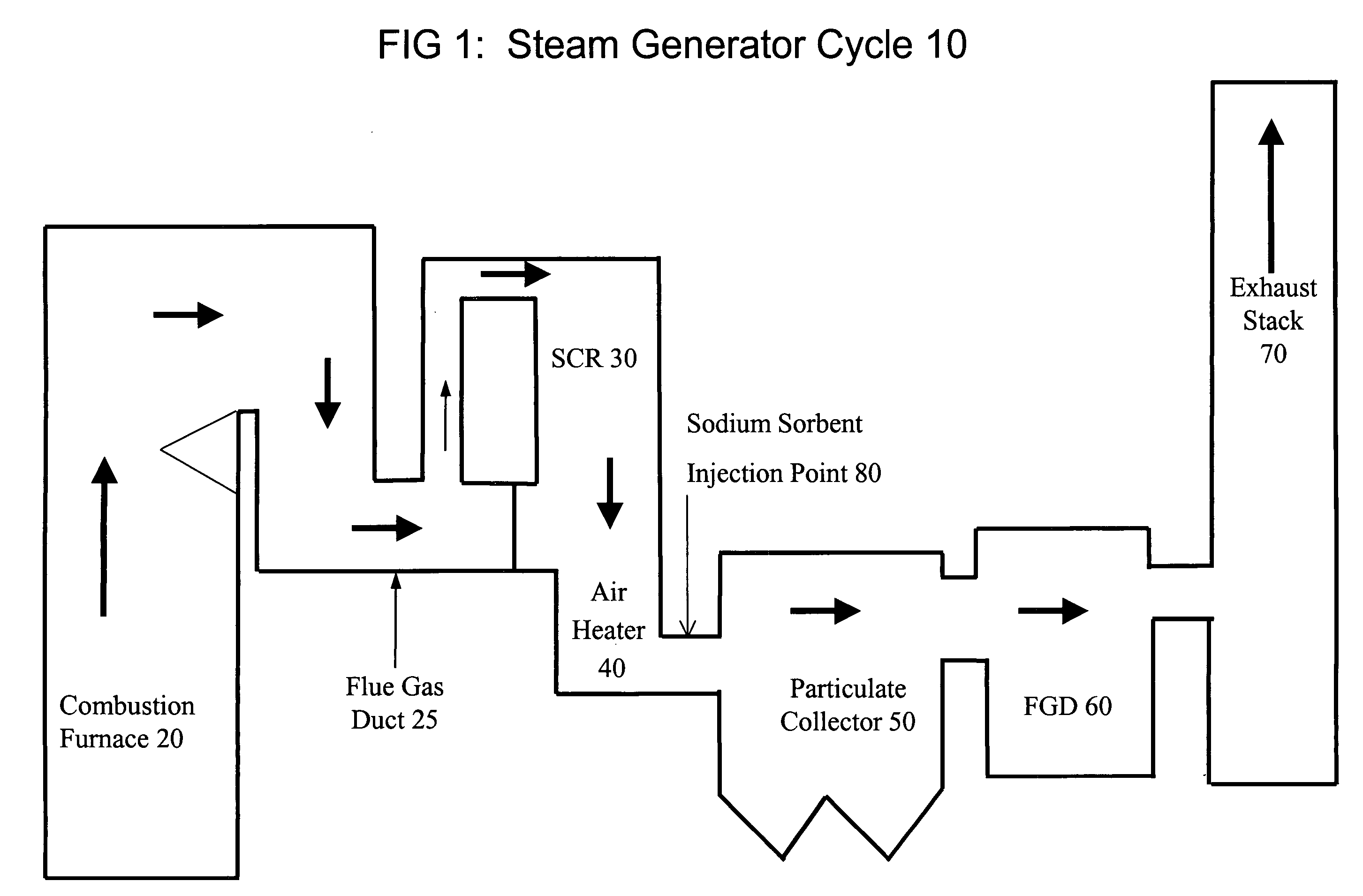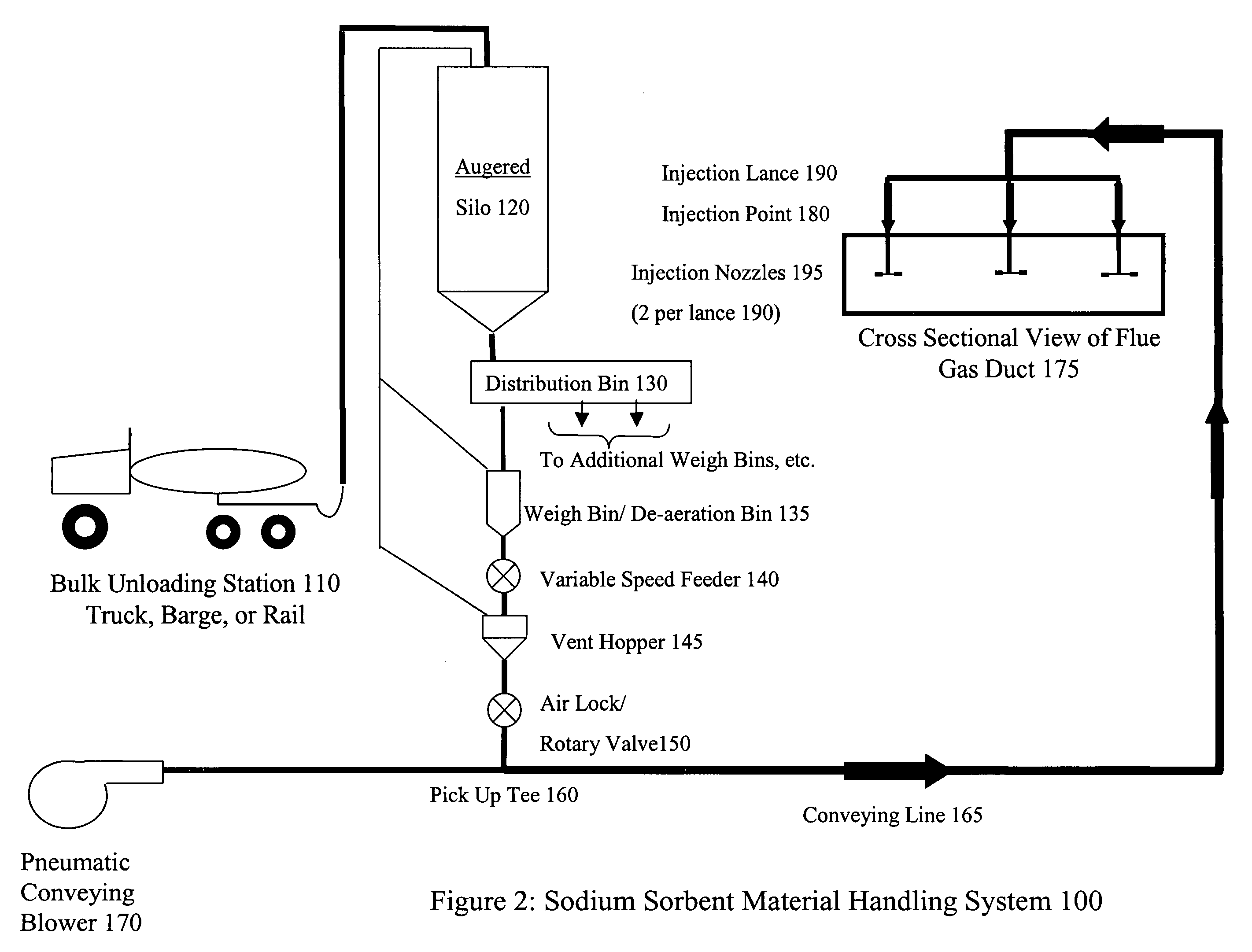System and method for treating a flue gas stream
a flue gas stream and system technology, applied in the direction of lithium compounds, separation processes, alkali metal carbonates, etc., can solve the problems of inability to meet the requirements of slag blowing,
- Summary
- Abstract
- Description
- Claims
- Application Information
AI Technical Summary
Benefits of technology
Problems solved by technology
Method used
Image
Examples
Embodiment Construction
)
[0045] Referring now to FIG. 1, shown is a general representation 10 of a steam generator cycle of the type typically utilized in electric power generation applications. A carbonaceous fossil fuel is combusted in the presence of air in combustion furnace 20 releasing heat that is absorbed by water and steam circulating around and within the zone of combustion. In addition to the heat that is released, a flue gas stream is formed comprising water vapor, particulate matter such as fly ash, and the gaseous by-products of combustion including oxides of sulfur (SOx) and oxides of nitrogen (NOx), the levels of which must generally be reduced, in order to meet clean air standards, before the flue gas stream is discharged to the atmosphere. The flue gas stream exits combustion furnace 20 through at least one flue gas duct 25 and is directed to the inlet of selective catalytic reduction (SCR) reactor 30. The flue gas stream exits SCR reactor 30 and is directed to the inlet of air heater 40,...
PUM
| Property | Measurement | Unit |
|---|---|---|
| temperatures | aaaaa | aaaaa |
| particle size | aaaaa | aaaaa |
| temperature | aaaaa | aaaaa |
Abstract
Description
Claims
Application Information
 Login to View More
Login to View More - R&D
- Intellectual Property
- Life Sciences
- Materials
- Tech Scout
- Unparalleled Data Quality
- Higher Quality Content
- 60% Fewer Hallucinations
Browse by: Latest US Patents, China's latest patents, Technical Efficacy Thesaurus, Application Domain, Technology Topic, Popular Technical Reports.
© 2025 PatSnap. All rights reserved.Legal|Privacy policy|Modern Slavery Act Transparency Statement|Sitemap|About US| Contact US: help@patsnap.com



